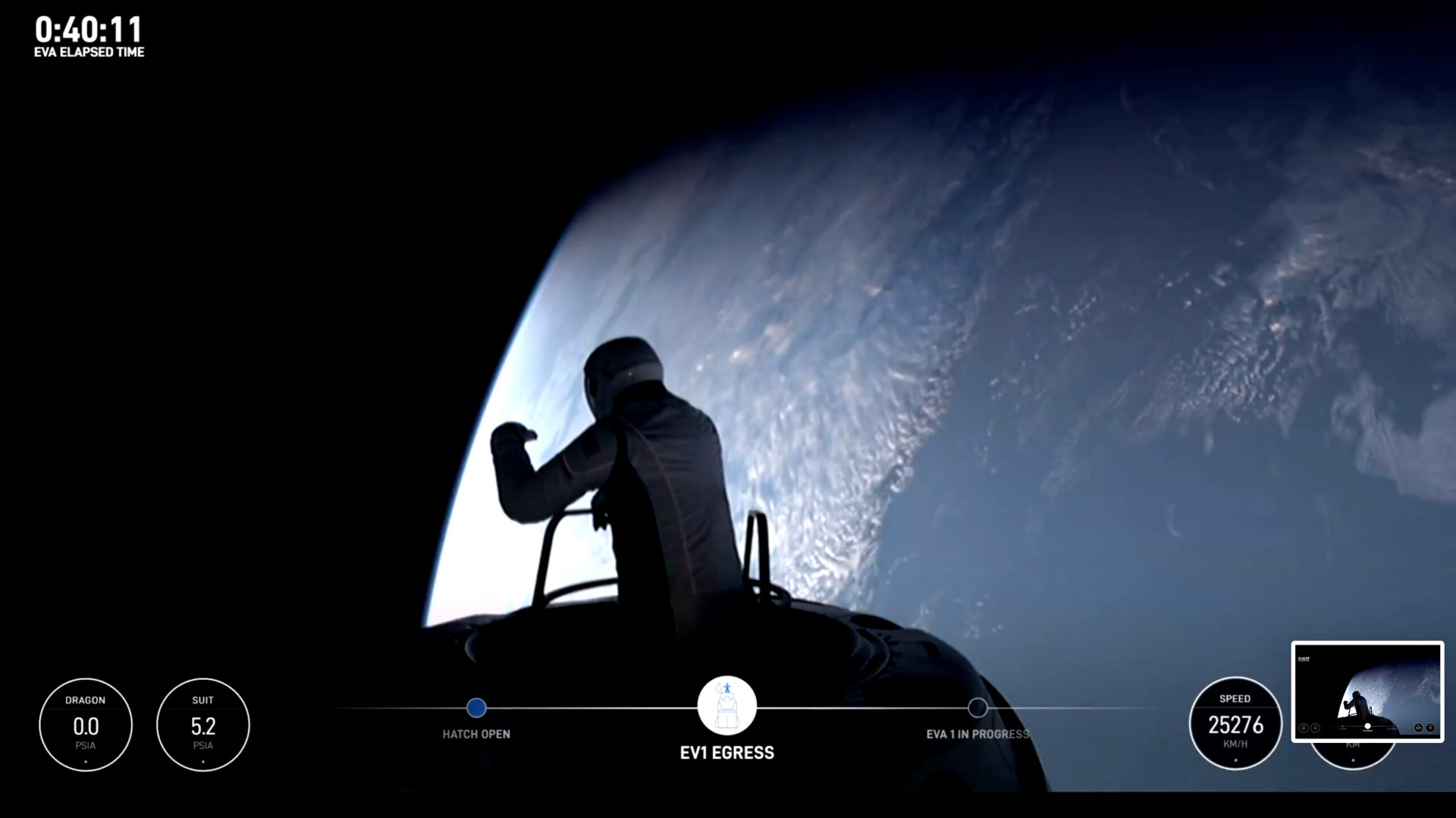Polaris Dawn’s crew members completed the first-ever commercial spacewalk on Thursday. The roughly two-hour mission outside their SpaceX Crew Dragon capsule, “Resilience,” marked a new phase of private spaceflight.
The historic extravehicular activity (EVA) began at approximately 6:15 am ET and lasted almost two hours. Commander Jared Isaacman and mission specialist Sarah Gillis alternated roles exiting the capsule for about 20 minutes each as the spacecraft orbited above Earth. In the process, the pair tested the capabilities and resiliency of SpaceX’s new EVA astronaut suits.
Commander @rookisaacman has egressed Dragon and is going through the first of three suit mobility tests that will test overall hand body control, vertical movement with Skywalker, and foot restraint pic.twitter.com/XATJQhLuIZ
— SpaceX (@SpaceX) September 12, 2024
While fellow crewmates—mission specialist Anna Menon and retired US Air Force Lt. Col Scott “Kidd” Poteet—remained inside Resilience for the spacewalk’s duration. The Dragon capsule is not designed with an airlock, so both Menon and Poteet also wore EVA suits and were harnessed to their seats in the depressurized cabin.
The Polaris Dawn mission also achieved notable moments even before Isaacman and Gillis’ excursion early Thursday morning. On September 10, the crew capsule reached a mission apogee of roughly 870 miles, making it the farthest any humans have traveled into space since the NASA Apollo 17 moon landing in 1972, and the highest orbit for any crew since the 1966 Gemini 11 mission. The voyage also makes Menon and Gillis the first women to ever travel that far into space.
According to SpaceX, the remainder of the Polaris Dawn crew’s time in orbit will be devoted to testing a Starlink satellite laser-communication array, as well as participating in 36 various research studies and experiments from 31 partner institutions “designed to advance both human health on Earth and during long-duration spaceflight.”
[Related: How does Polaris Dawn fit into the history of spacewalks?.]
Accomplishing that latter point, however, requires all four travelers to put considerable stress on their own bodies. The majority of Polaris Dawn’s mission occurs at orbital heights beyond the Van Allen belt, an area in which charged particles are captured by the planet’s magnetosphere. This means the crew will receive radiation doses equal to several months’ worth what they would normally absorb on Earth—but in just six days’ time. The data collected during this exposure may help SpaceX and NASA experts better understand long-term space travel’s effects on humans ahead of potentially extended stays on the Moon and Mars.
This is a developing story….

